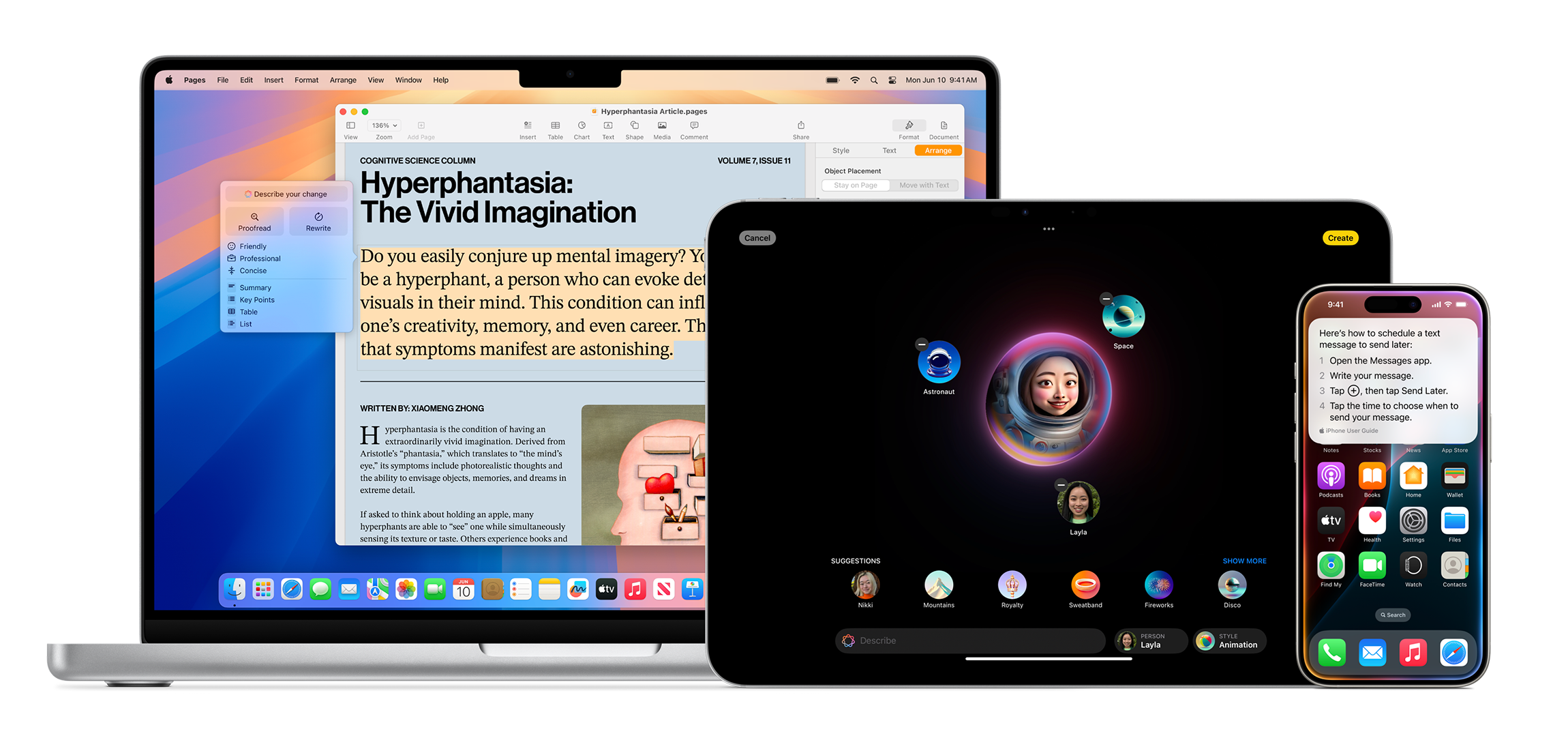Artificial Intelligence's newest features are hitting us left and right, or should we say Apple Intelligence? WWDC 24 was centered around Apple's new personal intelligence system, which takes its vision of making life easier for users to the next level. This system helps users express themselves, communicate with others, and simplify everyday tasks.
Let's help you understand what to expect and how this can elevate your application's user experience.
Current limitation
It's important to note that this AI integration system will only be available for some Apple products. Starting this fall, Apple Intelligence will be available for:
iPhone 15 Pro & Pro Max
iPad Pro & Air
Macbook Pro & Air
iMac
Mac Studio & Pro
These devices must have at least iOS 18 installed, contain an A17 Pro chip for iPhones or an M1 chip or newer for iPads and MacBooks, and the device's language must be set to English (U.S.). Apple Intelligence will be available in beta this fall as part of iOS 18, iPadOS 18, and macOS Sequoia. Initially, Apple Intelligence will only support U.S. English, with additional languages to be added over the course of the next year. Unfortunately, Apple Intelligence’s features won't be released this year for European users due to clashes with EU acts.
However, Apple is working hard to release AI in Europe, hopefully by 2025. Regardless, our developers have already explored how these features could be integrated into our clients' apps.
Transforming user experience with writing tools
Before discussing the technicalities of making your app compatible with Apple Intelligence, let's first examine its features for users, particularly the writing tools. These tools can transform, proofread, and rewrite texts.
Proofreading focuses on showing spelling and grammar mistakes or suggesting alternative phrasings. Rewriting can adapt the text to a specific tone of voice, such as sounding more professional and formal. Lastly, transforming text involves summarizing it or creating keynotes. This way, you can look at an email and immediately understand its purpose.
For example, by adding these features to Proximus Pickx, users could summarize long descriptions of new series or movies or convert them into keynotes for easier reading.
Improving Siri's capabilities
The implementation of Siri in different apps might be the most exciting feature! With Apple Intelligence, Siri is drastically improved in three key areas:
Siri sounds much more natural.
Siri is now screen-aware, understanding what you are looking at and acting accordingly.
Siri understands richer language, even if you stumble over your words.
Additionally, Siri can now perform actions with several applications at once. For instance, if you need to pick up your new driver's license or passport from the municipality, you can ask Siri.
For example, when you want to schedule an appointment to pick up your driver's license in your ‘Mijn Antwerpen’ app, Siri can quickly compare your calendar with the app's availability. This saves you the trouble of manually checking dates, making the process faster and easier for you.

Making your application compatible
Some coding will be required to make your application compatible with these new features. However, if SiriKit is already used in your app, you automatically get the Siri updates as mentioned above without requiring any additional work, ensuring a more natural and seamless integration.
The key framework here is App Intents. While not a feature itself, App Intents provides a foundation for building various features. This framework allows core features, actions, and content from your app to be presented outside the app in places like Spotlight, Shortcuts, Siri, and Control Center. Developers can implement app intents for one feature, such as Shortcuts, which are available for other integrations like Spotlight and Control Center through this joint base.
But as we understand, not everything is possible with Siri and Apple Intelligence, it depends on App Intent Domains. These domains are collections of App Intents-based APIs designed to provide specific functionalities such as Books, Spreadsheet, Camera, Presentation, File Management, Photos, Mail, DocumentReader, Browser, Word Processor, Whiteboard, and Journal. These are the 12 domains that will be released for iOS 18, with Mail and Photos immediately available and the others rolling out over the next few months. These domains contain actions trained and tested to support flexible voice interactions. Siri will support more than 100 different actions across these 12 domains this year.
Through the examples we've provided, it's clear that this will significantly improve user experience. And it's only the beginning. Who knows what our apps will be capable of with future versions of Apple Intelligence? We hope that Apple will be able to release this gem in Europe soon…
Developers should start preparing their apps sooner rather than later to take full advantage of these exciting new features!


